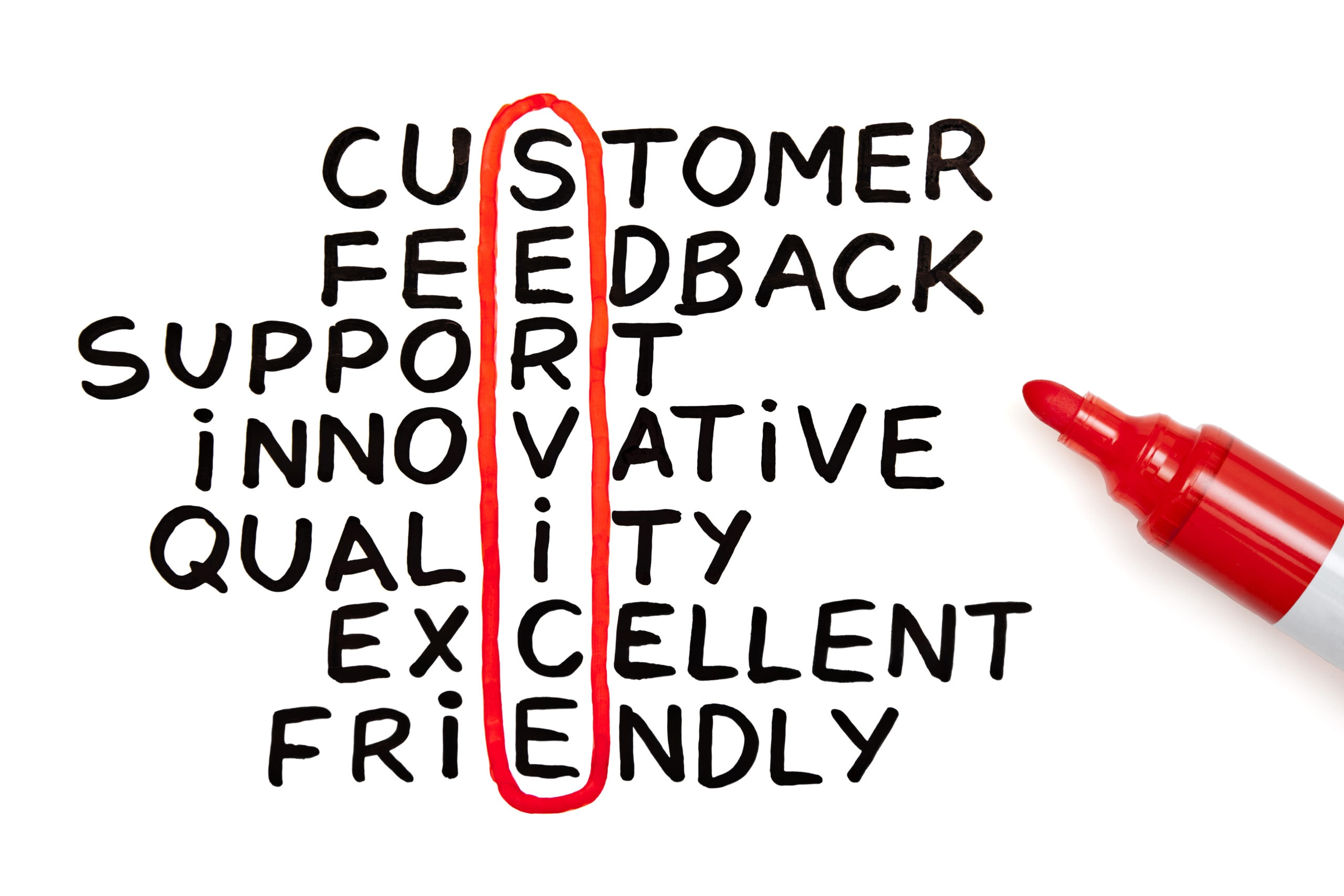
Understanding buyer psychology is key to grabbing consumers’ attention and getting people to buy. The 6 Principles of Marketing Persuasion by Dr. Robert Cialdini is one of the most influential models in this approach. Cialdini’s six principles—scarcity, reciprocity, authority, social proof, liking, and consistency—can help boost results and get customers to act quickly.
Let’s take a quick look at each one:
1. Scarcity. People want it more when something is in short supply and are more likely to act quickly. This is why marketers use messaging such as “Offer by invitation only!” or “Only for a limited time!” Offering free shipping if shoppers order within the next 20 minutes can increase checkouts by up to 300%.
2. Reciprocity. The principle of reciprocity is when marketers offer something of value, such as a gift or sample, to customers right out of the gate. This triggers the natural desire of customers to give back in kind (reciprocity). It’s why nonprofits put personalized notepads and address labels in fundraising envelopes — because it works.
3. Authority. Authority uses the demonstration of expertise to inspire trust in customers. Authority can be established through external sources such as press coverage or third-party endorsements. It can also be established through internal content like blogs, whitepapers, case studies, or interviews. By building authority, businesses can create credibility and increase the likelihood of customers responding to offers.
4. Social proof. Social proof relies on peer influence to increase credibility and trust among potential customers. This could include customer testimonials, displaying reviews or ratings, showing celebrity endorsements, or featuring influencer posts.
5. Liking. The principle of “liking” states that people are more likely to comply with the requests of someone they like or identify with. For example, popular influencers sharing their experiences and stories about using a company’s products is more likely to resonate with customers than regular advertisements.
6. Consistency. People want their beliefs to be consistent with their values. If buyers see themselves as good parents, for example, they are more likely to respond to messaging that positions them this way. “As a great mom, you know how important it is to…”
These are essential principles, but it may take some testing until you get the messaging right. Subtle changes can make a big difference, so be patient. Keep testing until you get a winner.

When a shopper walks into the store, even if they aren’t looking for something in your product category, the proper packaging can entice them to make a purchase they hadn’t planned. That’s why packaging should be considered part of your marketing toolbox. Here are five ways to use product packaging to stand out and create competitive differentiation.
1. Great design matters.
The front of your container is your face to the market. Whether a label or a folding carton, bright colors, glossy coatings, and specialty techniques like embossing and foil can stop shoppers in their tracks, and creative design techniques, such as vintage effects, can grab attention, too. Get creative!
2. Emphasize sustainability.
With more and more consumers looking to buy sustainable products, the packaging is a great way to show that your brand is committed to the environment. Use recycled materials, biodegradable packaging, and reusable packaging, then promote your efforts on the package where shoppers can see it easily.
3. Target specific audiences.
Did you know that you can break your packaging into target segments just as you do with other marketing materials? You might create complementary packaging for different audiences—one for men and one for women. Or, if you sell into areas with a high percentage of Spanish-speaking consumers, you might print a portion of your packaging with messaging in Spanish and English.
4. Create personalized options.
With today’s digital production, packaging can be printed in runs as short as one. Allow customers to purchase your hand-ground coffee in bags with their names on them (for example, “Joan’s Favorite Breakfast Mix”) or with the names of friends and family to use as gifts. Encourage businesses to brand their products for corporate events.
5. Add something extra.
Include something fun and surprising inside the package. This might be a coupon for their next purchase, a free sample of a related product, or a funny refrigerator magnet. Customers appreciate and remember this extra effort.
Packaging is one of your most essential marketing tools, so use it to your advantage. With a bit of creativity, you can surprise and delight your customers, build brand loyalty, and keep your customers coming back.

In today’s times of uncertainty, it can be challenging to know how to strike the right tone. While consumer spending remains strong, there is still much uncertainty about the future. Some Americans are doing quite well. Others are still struggling. For marketers, this means crafting messaging that is both optimistic and sensitive. It can be a tricky balance. Here are five tips for getting it right.
1. Exude confidence.
During difficult times, people flock to leaders who exude confidence. Brands can inspire, motivate, and make people feel that everything will be okay. Reach out using the theme, “We’re here to help.”
2. Invest in social and environmental justice.
Consumers like to align with brands that “do good.” Promote your support for socially or environmentally conscious organizations and let people know about it. For example, a SheerID study found that, during the pandemic, 68% of respondents wanted brands to donate to programs that provided direct support for medical workers.
3. Offer a helping hand.
While the U.S. economy continues to grow, this is still a time of struggle for many. Offer deferred payments, ideas for lowering expenses, and so on. Even if your customers don’t need the help themselves, this kind of care for others builds brand equity that pays off in the long run.
4. Show off your expertise.
This is a great time to share meaningful expertise with your customers. Think “Top 5 Ways to Save on Lawn Care” or “3 Plumbing Fixes You Can Do Yourself.”
5. Make your customers’ lives easier.
When the world is uncertain, consumers want to feel that they at least have control over their own homes and families. Position your products in terms of how they can help your customers make lives safer and easier, even in small ways. “Let us help you save 10% on your home electric bill,” or, “We’re offering FREE delivery of pool chemicals all summer long so you can relax at home!”
Brands can play a positive role in helping their customers through uncertain times. Striking the right tone tells your customers that you are paying attention… and that you care.

Gastonia, NC – December 6, 2022– ImageMark Business Services announced today a three-year ownership transition which will be completed in 2025. As a part of this agreement, an ownership stake in the company has been acquired by Wes Pollock and Josh Payne. ImageMark is currently owned by Walter Payne. Walter will remain with the company as President through 2025, as he works through the succession plan with Wes and his son Josh to transition ownership.
ImageMark offers a variety of printing, packaging and fulfilment offerings to its customer base, which includes medical device companies, retailers, national restaurant franchises, utility companies and professional sports teams around the country. As a part of this acquisition, ImageMark will pursue additional kitting, fulfillment and contract packaging opportunities in addition to the company’s core offerings, which include Web to Print, Wide Format Printing, Direct Mail, Kitting and Fulfillment. ImageMark offers unique capabilities to help large multi-location companies control their print and packaging spend and standardize quality across their business, with their ResourceOne® platform.
Wes Pollock, Chief Revenue Officer of ImageMark, brings a wealth of packaging, logistics and sales expertise to the company. Most recently Wes was the Vice President of Sales & Strategic Partnerships at Eleos Technologies, a Knight-Swift (KNX) company, where he built a network of integration partners for the leading software platforms and providers in logistics and established a channel sales program to build a scalable sales model for the business. Previous roles include working as Packaging Consultant for Veritiv (VRTV), the leading packaging distributor in the US, where he sold packaging equipment and supplies to multi-location manufacturers.
Josh Payne, Chief Operating Officer of ImageMark, was most recently Senior Account Executive with Eleos Technologies, where he led the growth of the Enterprise Accounts. Josh has a long history with the medical distribution industry, including roles with McKesson (MCK), a leading national medical distribution company. His medical sourcing and distribution expertise will be critical as ImageMark looks to grow and expand its medical kitting and packaging business.
ImageMark was originally founded in 1924 as Brumley Printing, and has operated as ImageMark since 1996. With nearly 100 years of experience in the industry, and more than 60 employees at the Gastonia, North Carolina facility, ImageMark is well positioned for continued growth and innovation to support its customer base.
About ImageMark
ImageMark supports marketing efforts through our production implementation services. We offer a blended approach of both digital and offset printing supported by full bindery, fulfillment, promotional products, complex assembly/kitting, wide-format printing and direct mail.
Our premier solution is our robust online portal, ResourceONE® providing large, multi-location corporations across the US with an efficient method to produce and manage their materials on-demand while maintaining brand controls with cost reduction results.
Well-positioned in the Healthcare, Utilities, Education, Hospitality, and Manufacturing industries, ImageMark approaches each potential client uniquely to understand their needs and challenges. With this discovery process, solutions are developed to best serve the challenges that may exist.
Follow us at www.imagemarkonline.com, LinkedIn and Facebook
For media inquiries, please contact:
Cindy McKee
cindy.mckee@imagemarkonline.com

If you aren’t already using an e-commerce portal to archive, order, and manage your print materials, you are leaving money on the table. How? Let’s look at five costs associated with manual print ordering and management and how you save money using an online storefront instead.
1. Administrative time. How long does it take one of your employees to place orders for 1,000 copies of your product brochures, 500 business cards for six employees, and 5,000 full-color direct mail pieces? It’s not just the time it takes to place each order. It’s what these employees are not getting done while they do.
2. Outdated inventory. How much inventory do you waste yearly because you order in large quantities to keep the cost down, then throw out because the materials go out of date? Through an online storefront, you order what you need, as you need it, in smaller quantities. If you are warehousing these materials, you will also save money on warehousing.
3. Errors. The branding elements are locked in when you approve and centralize your materials in an online storefront. No matter who places the order, at what time of day or night, your brand colors won’t get messed up. You won’t use the wrong image, last month’s offer, or an outdated logo. You save money on remakes, brand erosion, and embarrassment.
4. Design. Repeat jobs can be transferred to templates while still allowing you to customize, update, and segment them without sacrificing creativity. You can handle these jobs in-house without compromising your brand by using templates.
5. Faster turnaround. As the saying goes, “Time is money.” By starting with a brand-approved template, you can turn around projects in hours rather than weeks, even when you need to make changes. This allows you to respond more quickly to market changes (such as moves by competitors) and make your marketing more agile.
These are some of the top benefits of digital storefronts, but they are by no means the only ones. How much money could you save by setting up your own?

Think you can’t afford direct mail because you’re a local business with a tight budget? Think again. With USPS Every Door Direct Mail (EDDM), you can send targeted direct mail for a postal cost of $.20
or less per piece. Even target addresses by age, household income,
or household size.
Use EDDM for just the right audience:
- Grand openings
- Local sales and promotions
- New locations
- Discounts and coupons
- Local events and more
Contact us to find out how!

You come home from work and discover that you received a direct mail piece. Nice! We all love mail. But then you talk to your neighbor, and they got the same piece in their mailbox. Then you talk to another neighbor, and they got one, too. So did the neighbor across the street and the neighbor the next road over. So much for feeling special.
Personalization matters. It makes people feel valued, especially when it arrives in print. Digital personalization is all around us, from Amazon recommendations to shopping cart abandonment reminders, but personalization in print marketing is less common. It stands out.
While personalization in print stands out for relevance, it increasingly stands out for another reason: respect. What do we mean by that?
Personalizing your print communications shows respect for the recipient’s time. Nobody has time for irrelevant mail anymore. Buyers know that personalization is possible—they even expect it. They look for it, and they recognize it when they see it. By personalizing the piece, the recipient knows that you’ve taken the time to create something just for them. They know that when they open it, they are less likely to find something irrelevant that is a waste of their time.
It’s no wonder that, in a classic InfoTrends study on the value of print personalization, when consumers were asked how providers can improve the value of their direct mail communications, two of the top three responses were “make them relevant to me” (34%) and “personalize the content for me” (28%). Do you know the top reason for marketers to personalize their transactional mail, in particular? “Make it easier to understand,” with 43% giving this answer. This, again, shows respect for the recipient’s time.
It’s no wonder that when asked how personalization affected the amount of time consumers spent with marketing mail, nearly half (49%) agreed that they spend “much more time” reading direct mail that is “personalized and relevant” to them than they do with generic direct mail.
The data continue to tell the story. You’re missing a massive opportunity if you’re not personalizing your print or digital communications. Need to get started? Let’s do it!

Targeting is the foundation of any highly effective marketing campaign, but there are different ways to slice and dice your list based on your marketing goals. Here are four different ways to target your audience. Which approach might work best for your next marketing campaign?
1. Demographics.
Demographics such as age, gender, ethnicity, and household income are simple but effective to focus your messaging. For example, if you are selling jewelry, you might show different collections to different recipients based on household income. If you sell automobiles, you’ll select other vehicles for those just out of college versus those married with young children.
2. Lifestyle.
Lifestyle data pools target audiences based on shared interests, such as fitness and wellness, green living, or pet ownership. Two people who look very different demographically may both love dogs or snowboarding. There are many ways to get at lifestyle data, including magazine subscriptions and past purchases.
3. Life stages data.
Whether young or old, rich or poor, we face common life stages. For example, new parents deal with diapers, and recent college graduates need to furnish apartments. Retirees may be looking to downsize, travel, or invest in a lasting legacy. Targeting based on life stage is different from targeting based on age or generation in that two shoppers might be the same age but at very different stages in life. For example, one might still be single and living at home, while another might be married and with young children. Even though they are the same age, their needs and priorities will differ.
4. Past purchases.
We can infer a lot about someone based on what they buy. If they just purchased a new pool, they’ll likely be in the market for pool accessories, too. If they just purchased home improvement supplies, there’s a good chance they’ll be in the market for new appliances.
Want to learn more about any of these data types and how to develop campaigns around them? Let us jump in and help.

Nonprofit organizations know the importance of personalized direct mail. Most likely, you are already personalizing your mailers by the donor’s name, giving history, and often household income. But are there other data points that could help? Here are some exciting statistics that, while they may not all apply to your organization, illustrate how important it is to know as much as possible about your donors. You never know what data might be vital to increasing their support.
1) Should you be targeting Millennials? Not necessarily. Millennials (those born 1981–1995) are more socially-minded than older generations, but does this mean they are a fundraising gold mine? Actually, no.According to Blackbaud, Millennials aren’t significant givers. On average, they give $481 per year, compared to $732 for Generation X and $1,212 for Boomers.
2) Mac users are more generous. On average, Mac users give $182 per donation, while PC users give $137. This reminds us that correlations related to giving can be found in the most unexpected places, so dig deep!
3) Add video. According to Olgive, 57% of people who watch a nonprofit video will ultimately donate. Use print-to-mobile tools like QR Codes and augmented reality to enable donors to feel more personally connected to your cause.
4) Be mobile-friendly. According to Nonprofits Source, 51% of people visit nonprofit websites on mobile devices. Even if you send your appeals through the mail, make sure your website is optimized to look fantasticregardless of what device people use to access it.
5) Don’t overlook lower-income households. If you think the more money someone has, the more likely they will reach into their pockets, you’d be wrong. In one survey, households making $25,000 per year gave an average of 12.8% of their annual income to charity. This is the highest percentage (and nearly double that) of any other income demographic.
All of this points to the need for more and better data. Every nonprofit’s donor base will look and act differently, so before mailing out that appeal, invest the time to understand yours.

When two companies offer similar products, what differentiates one from another? It’s more than price. When it comes right down to it, there is something even more important. It’s the customer experience.
While “customer experience” can be an overused buzzword, there is a lot of truth behind its importance. At lunchtime, for example, there might be a deli right down the street that makes the best pastrami on rye in the entire country, but if the floor is dirty and the people behind the counter are snarky and rude, it doesn’t matter. You’ll go somewhere else.
The same occurs at the retail level. Take the example of Nordstrom’s, which has been regularly praised by the National Retail Foundation as both setting and raising the standard for customer experience. Nordstrom customers know that when they shop at one of its stores, they will not only find premium merchandise, but they will be treated with value. From their interaction with employees to the chain’s policies designed to enhance speed and convenience, shoppers may buy the same merchandise at other high-end retailers, but they won’t be treated the same way.
Customer experience matters. With so many brands competing for the same customer dollars, experience can become the main differentiator between one company and the other. Not just in a positive way, but in a negative way, as well. In fact, Microsoft found that 58% of American consumers will switch companies because of poor customer service.
That’s why we put so much emphasis on customer experience at ImageMark. We hope that, when you interact with any of our team members, you feel that we really care.
- From how you are greeted when you first contact us, to how promptly and professionally your estimate is handled, we hope that you feel respected and valued from the very first moment.
- If you have questions, we hope our salespeople and customer service team answer those questions promptly and offer suggestions genuinely designed to benefit your business and marketing plans, whether they improve our bottom line or not.
- When things go wrong, we hope that you know that we will take full responsibility for anything that is on us, and we will make it right, no matter what it takes.
- We hope that you do business with us, not just because of the value we offer in print and marketing services, but because you feel that you matter to us and that we value the projects you are doing.
If there is any area in which your customer experience falls short, let us know! We want to exceed your expectations because we know that, even though we take great pride in the print and marketing services we offer, a great customer experience is the greatest value we can provide.
